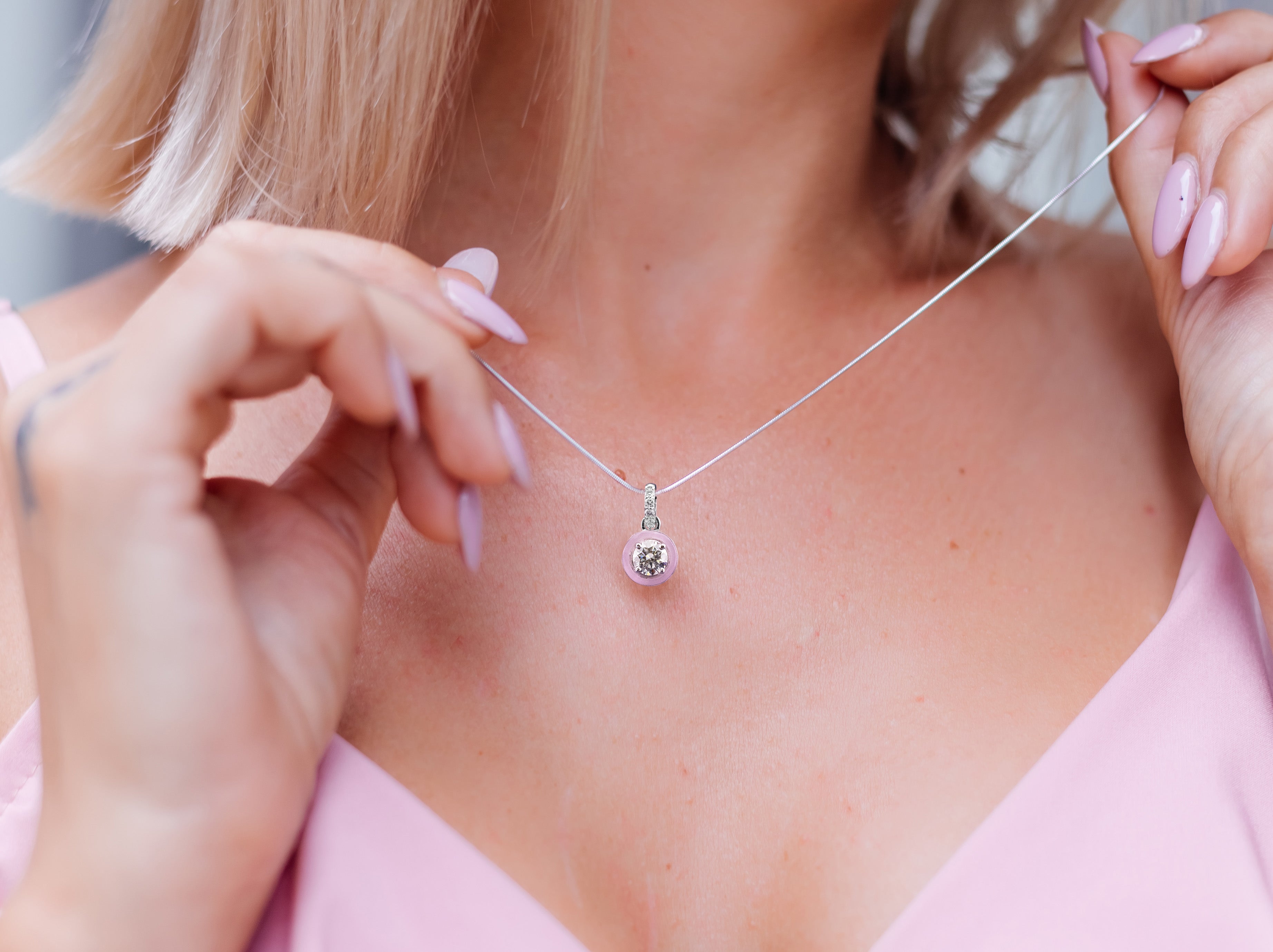Home
Explore the World of Diamonds and Jewelry Trends
Lab Grown Diamonds vs. Moissanite and Cubic Zirconia: A Comparison

Lab Grown Diamonds vs. Moissanite and Cubic Zirconia: A Comparison
by Nikhil Sood on Jan 11 2025
When shopping for sparkling, high-quality gemstones, the choices can be overwhelming. Lab-grown diamonds, moissanite, and cubic zirconia are all popular options, each with its own characteristics. In this blog, we'll explore these three gemstones, highlighting why lab-grown diamonds are the ultimate choice for those seeking beauty, value, and sustainability.
Understanding Lab Grown Diamonds
Lab-grown diamonds are real diamonds created in a controlled laboratory environment using advanced techniques. They share the same physical, chemical, and optical properties as natural diamonds. These diamonds are virtually indistinguishable from their mined counterparts, except for their origin. Moreover, lab-grown diamonds are more accessible, eco-friendly, and conflict-free, making them a modern alternative to traditionally mined stones.
What Are Moissanite and Cubic Zirconia?
Moissanite:
-
A gemstone made from silicon carbide.
-
Known for its fire and brilliance, moissanite often sparkles more than diamonds but in a different way that some may find artificial.
-
While durable (with a Mohs hardness of 9.25), moissanite is not as hard as a diamond.
-
It’s a synthetic stone, not a diamond, and has a lower resale value.
Cubic Zirconia (CZ):
-
A man-made material composed of zirconium dioxide.
-
CZ mimics the look of diamonds but is softer (Mohs hardness of 8.5) and more prone to scratching over time.
-
It’s an affordable option for costume jewelry but lacks the brilliance and longevity of diamonds or moissanite.
Why Lab Grown Diamonds Stand Out
-
Real Diamonds, Real Beauty: Unlike moissanite and cubic zirconia, lab-grown diamonds are real diamonds, identical to mined diamonds in every way except their origin. Their sparkle, fire, and brilliance are unmatched, offering the timeless allure of natural diamonds without the high cost or ethical concerns.
-
Durability: Diamonds are the hardest natural material, ranking 10 on the Mohs hardness scale. This makes lab-grown diamonds ideal for everyday wear, whether in engagement rings, earrings, or bracelets. Moissanite and cubic zirconia, while durable, don’t match the toughness or longevity of diamonds.
-
Eco-Friendly and Conflict-Free: Mining natural diamonds often involves environmental destruction and unethical labor practices. Lab-grown diamonds, however, are created in sustainable facilities, ensuring minimal environmental impact and a conflict-free supply chain. By choosing lab-grown, you’re making a responsible choice without sacrificing quality.
-
Accessibility: Lab-grown diamonds are typically 20-40% more affordable than their mined counterparts. This affordability opens the door to larger carat weights or higher quality stones without breaking the bank. Moissanite and CZ may cost less, but they lack the intrinsic value and prestige of diamonds.
-
Certifications and Value: Lab-grown diamonds above 1 carat often come with certification from reputable gemological institutes, ensuring their quality and authenticity. Moissanite and CZ do not hold the same level of recognition or value retention over time.
Comparing the Sparkle
While moissanite is known for its intense sparkle, its rainbow-like fire can appear overly flashy or unnatural. Cubic zirconia tends to lose its sparkle over time due to surface scratches. Lab-grown diamonds, with their superior brilliance and light performance, maintain their timeless sparkle for generations.
Which One Is Right for You?
For those seeking a genuine diamond with unparalleled beauty, durability, and ethical sourcing, lab-grown diamonds are the clear winner. Moissanite and cubic zirconia are excellent for budget-friendly options, but they fall short in replicating the true essence of a diamond.
At Carat Spark, we specialize in high-quality lab-grown diamonds, ensuring you get the perfect balance of elegance, value, and sustainability. Explore our collection today and discover the brilliance of lab-grown diamonds that rival nature itself.
Share










